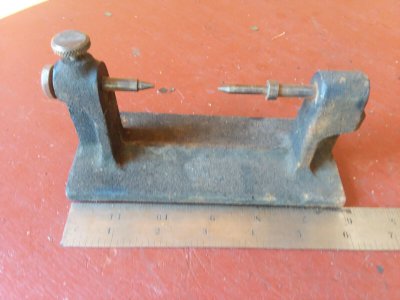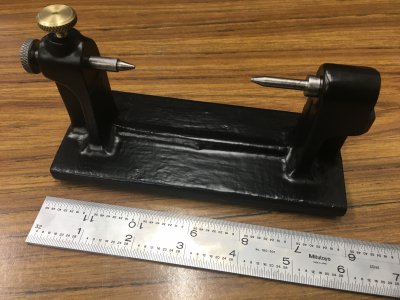- Joined
- Sep 7, 2019
- Messages
- 674
As mentioned before, the aluminum thread is pretty snug going in. I wanted test out the concept before I welded everything together so I figured if I force the thread into the nut it'll grind in its own clearance. Brilliant, right? We all know what happens to tight fitting aluminum parts in steel, it galled severely. Now the damned thing is stuck super super tight so I had no recourse but to cut it off and bore it out on the lathe... Man, everything was going so smoothly up until now!
Luckily I have a 4 jaw to hold the part.
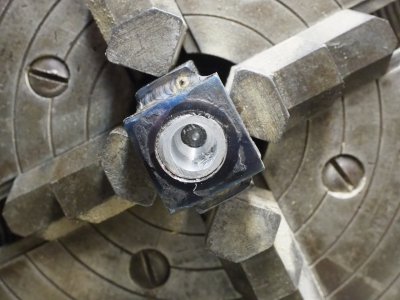
Drill size for the 3/4-10 thread is 21/32" So I stepped up to that. I drilled about halfway into the nut and checked it out. The drill was peeling out the aluminum from the threads pretty well but it was also cutting into the nut threads. So I stepped down to 5/8" to finish the hole.
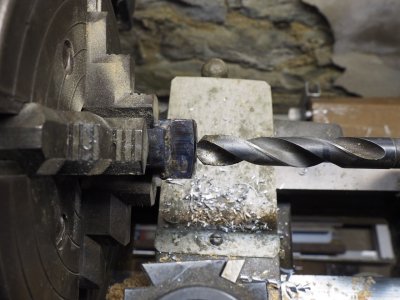
Here's the little chunks that I had to beat out.
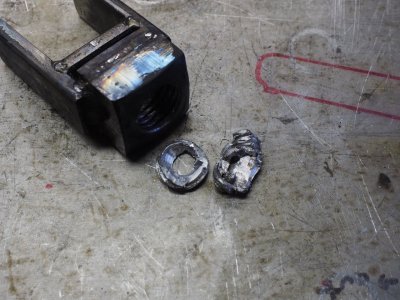
Now the threads are compromised but I want to continue on. I don't have any other nuts of this size and I'm not confident enough to try internal threading. What a pain in the ass. This is supposed to be relaxing!
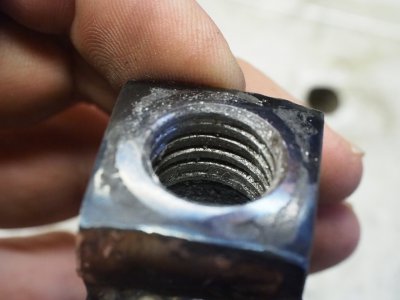
Anyway, soldier on. I can always cut the nut off and weld on a new one once the world goes back to normal.
I trimmed up the body to a closer shape and mocked up the last piece. Some edges were beveled for weld penetration since I want to grind it smooth later.
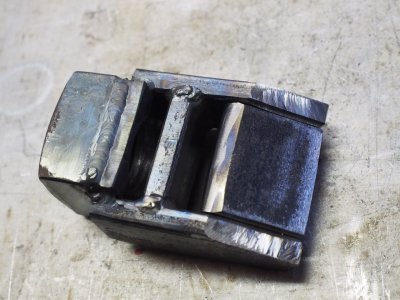
All welded up.
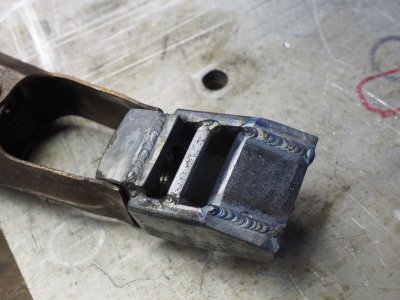
Getting inside here was tough. I had to increase tungsten stick out to dangerous levels! When gas shielding becomes less focused the arc tends to be less focused as well.
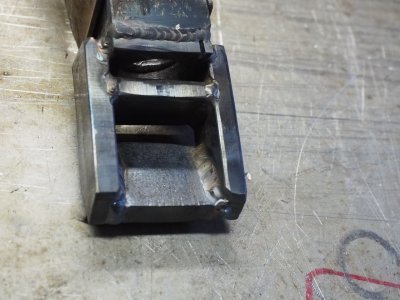
That's where I'm at currently. I have to now make a handle. I have a 12" length of 3/4" round bar but it's 304 stainless. I figure I'll try that out. These will be my second ever lathe cut threads so we'll see...
Luckily I have a 4 jaw to hold the part.

Drill size for the 3/4-10 thread is 21/32" So I stepped up to that. I drilled about halfway into the nut and checked it out. The drill was peeling out the aluminum from the threads pretty well but it was also cutting into the nut threads. So I stepped down to 5/8" to finish the hole.

Here's the little chunks that I had to beat out.

Now the threads are compromised but I want to continue on. I don't have any other nuts of this size and I'm not confident enough to try internal threading. What a pain in the ass. This is supposed to be relaxing!

Anyway, soldier on. I can always cut the nut off and weld on a new one once the world goes back to normal.
I trimmed up the body to a closer shape and mocked up the last piece. Some edges were beveled for weld penetration since I want to grind it smooth later.

All welded up.

Getting inside here was tough. I had to increase tungsten stick out to dangerous levels! When gas shielding becomes less focused the arc tends to be less focused as well.

That's where I'm at currently. I have to now make a handle. I have a 12" length of 3/4" round bar but it's 304 stainless. I figure I'll try that out. These will be my second ever lathe cut threads so we'll see...


